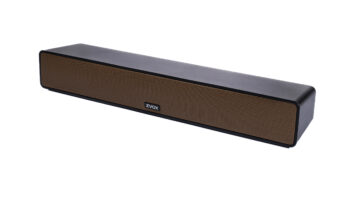Around 1999 or 2000, I remember calling an executive with a top CE brand to ask him when Amazon.com became an official retailer of theirs, since several key products were featured prominently on the site.
In that era, top CE brands were against putting their wares online, especially Amazon, for fear of reprisals from their brick-and-mortar retailers, which at that time didn’t have their own sites that sold goods.
Not surprisingly, the exec vehemently denied it had made Amazon an official retailer, and he blurted out, “They have to be transshipped goods. I have to check this out and get back to you.”
Well, he called back. The products were transshipped … supposedly. But soon afterward, this top brand and others entered 21st century retailing and began selling its products online via Amazon and other online-only retailers.
More than one veteran CE retailer (I can’t remember his name) predicted that the emergence of Amazon and online retailing would be the “death of traditional retailers.” The same kind of comments supposed made back around 1970 when Kmart, Walmart and other mass merchants began to sell CE, which helped create the industry’s first retail buying groups.
Well, CE products quickly became a staple online in the early 2000s, so much so that TWICE began doing a list of the top CE e-tailers — online-only dealers for a couple of years.
The TWICE Top 20 Consumer Electronics E-tailers Report, which tracks annualized CE sales online for calendar year 2013 and was developed by TWICE in cooperation with the Stevenson Company, shows how much has changed since the early 2000s.
Sure, Amazon is still the No. 1 CE e-tailer by far, with $15.6 billion of the Top 20’s $38.1 billion in sales. But the rest of the list is a mixture of manufacturers (Apple, Dell, HP, Sony) as well as online-only players (Newegg, TigerDirect) and mammoth brickand- mortar players (Walmart, Best Buy, Costco and Target, among others).
The popularity of shopping online for CE has been blamed for severely impacting traditional retailers since then, with small and large retailers closing and many national chains. Best Buy, Walmart and Target — just to name three — are still scrambling to build their online expertise and compete with Amazon. And the online giant’s momentum continues to build, with a 20.8 percent gain in CE sales during 2013, according to our report.
In the 37 years I’ve covered this business, plenty of retailers closed, before Amazon was born and online retailing became the norm. Then, as now, some retailers couldn’t adapt and evolve to new business conditions.
Today there are plenty of regional and local independent retailers that do not have the dollar volume to be in the Top 20. Yet they have learned their lessons and adapted to online retailing, and they successfully interact and sell today’s consumers via online and social media, with in-store offerings being part of the mix.
The growth in online sales of CE only goes to show retailing in this industry continues to evolve, and that those public companies and privately held retailers that adapt to the present and future market conditions can survive — and thrive.













